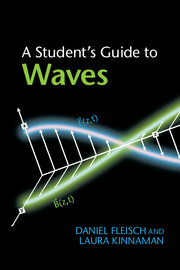5 - The electromagnetic wave equation
Published online by Cambridge University Press: 05 April 2015
Summary
This is the second of three chapters that apply the concepts of Chapters 1, 2, and 3 to the three principal types of waves: mechanical, electromagnetic, and quantum. Although the wave nature of the mechanical waves described in Chapter 4 may be more obvious to the casual observer, it is electromagnetic waves that allow us to observe the world around us and the Universe beyond our planet. And, in the last 100 years, we've learned to use electromagnetic waves to send and receive information over distances ranging from a few meters between wireless devices to millions of kilometers between Earth and interplanetary spacecraft.
This chapter begins with an overview of the properties of electromagnetic waves in Section 5.1, after which you'll find a discussion of Maxwell's equations in Section 5.2. The route that leads from those four equations to the electromagnetic wave equation is described in Section 5.3, and planewave solutions to that wave equation are described in Section 5.4. This chapter concludes with a discussion of the energy, power, and impedance of electromagnetic waves in Section 5.5.
Properties of electromagnetic waves
Like any propagating wave, an electromagnetic wave is a disturbance from equilibrium that carries energy from one place to another. But unlike the mechanical waves discussed in Chapter 4, electromagnetic waves do not require a medium in which to propagate.
So if electromagnetic waves can propagate through a vacuum, what exactly is carrying the energy? And what's doing the waving? The answer to both questions is electric and magnetic fields.
Even if you haven't spent much time studying fields, you can still understand the basics of electromagnetic waves. Just remember that fields are closely related to forces; one definition of a field is “a region in which forces act”. So an electric field exists in a region in which electric forces act, and a magnetic field exists in a region in which magnetic forces act.
- Type
- Chapter
- Information
- A Student's Guide to Waves , pp. 162 - 184Publisher: Cambridge University PressPrint publication year: 2015



